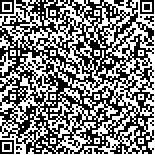|
| 摘要: |
| 都市圈已经成为新型城镇化推进的主
要战略空间,在推进区域一体化发展中发挥着重
要作用。贵阳都市圈的建设对于西南地区的高质
量发展具有重要意义。基于空间相互作用理论,
研究通过建立城市综合质量评价指标体系、修
正引力模型、断裂点模型分析贵阳都市圈的空
间结构特征,结果表明贵阳都市圈呈现出核心
城市与周边城镇空间发展不均衡、强核心—弱
边缘的圈层式空间结构、圈层扩散及轴向放射
式的都市圈空间发展导向、距离核心城市40—
80 km断裂点区域发展滞后的空间结构特征。研
究发现贵阳都市圈仍处于初期发展阶段,核心
城市的发展能级受到生态环境及区域发展阶段
的影响,尚未形成对都市圈地区的全面带动。研
究提出需要进一步增强核心城市能级,积极培育次级中心城市,通过打造现代化产业体系、健全
交通网络强化都市圈内部联系,形成“核心—环网—放射状”的区域一体化都市圈空间结构。 |
| 关键词: 空间相互作用理论 空间结构 圈层划分 优化对策 贵阳都市圈 |
| DOI:10.13791/j.cnki.hsfwest.20220515 |
| 分类号: |
| 基金项目: |
|
| Research on Spatial Structure Analysis and Optimization Strategies of GuiyangMetropolitan Area |
|
JIANG Haobo, LI Simeng, HUANG Jianzhong
|
| Abstract: |
| With the rapid development of globalization and urbanization, metropolitan area
has become an important spatial organization form for regional economic development. The
spatial structure of metropolitan area has always been a hot topic of research at home and
abroad. Developed countries such as the United States, Britain, Japan and South Korea have
made in-depth exploration and practice in the definition, spatial structure and construction
of metropolitan areas, etc. Since the release of the National Plan for New Urbanization (2014-
2020) in 2014, metropolitan areas have become the main strategic space for the promotion of
new urbanization and play an important role in promoting regional integration. However, due
to the great regional differences in China, it is difficult for the west regions to simply replicate
the development experience of metropolitan areas in the east region. Therefore, it is necessary
to explore the unique development path of the metropolitan area in the western underdeveloped
areas. Most of the studies on metropolitan area have analyzed the spatial structure, types,
modes from the perspectives of commuting, economic connection, network. The research
area is mainly concentrated in the economically developed plain metropolitan area. However,
the differences of metropolitan area in different regions are largely ignored in the domestic
and foreign research, and the research on the underdeveloped mountainous areas in the west
is insufficient. As a typical western mountainous metropolitan area, this paper takes Guiyang
metropolitan area as a typical case. Based on the existing research basis, this paper analyzes
the spatial structure characteristics of Guiyang metropolitan area by using the comprehensive
quality evaluation index system, the revised Gravity Model and the Breaking-Point Model,
and puts forward planning suggestions. It is expected to provide ideas and experience for
the construction of metropolitan area and the promotion of new urbanization with mountain
characteristics in the underdeveloped mountainous area of southwest China. The results show
that: 1) in Guiyang metropolitan area, the comprehensive quality of Guiyang, far more than in
other areas/cities and counties, reflects the leading role of Guiyang as the core city of Guiyang
metropolitan area. But it also reflects the problems of uneven distribution of urban economic
density and uneven spatial economic development in Guiyang metropolitan area, which is a
typical polar core development model with strong core and weak edge. 2) The calculation of economic distance shows that, other conditions being
the same, the richer the transportation combination, the closer the transportation links between cities, and the closer the economic distance to the
core cities in the metropolitan area, which reflects the important role of the transportation network in the construction of the metropolitan area. 3)
The outward radiation of Guiyang metropolitan area shows a typical circle structure, and expands to Huishui in the south, Duyun in the southeast,
and Anshun in the southwest. With the increase of the distance from the core city in the metropolitan area, the economic radiation of the peripheral
cities is weakened, and the strength of economic ties is getting smaller. The peripheral cities are less influenced by the radiation of the core cities,
so they are more likely to develop in clusters with the surrounding towns. 4) The spatial scope of Guiyang metropolitan area is defined by the model
calculation. Guiyang metropolitan area shows the core-edge spatial structure characteristics of “core circle - tight circle - semi-tight circle - loose
circle”, which further reflects the polar core development mode of Guiyang metropolitan area. 5) The measurement of the Breaking-Point Model
shows that in the process of outward radiation of the core city of Guiyang metropolitan area, there are probably two levels of gravity breaking points
within 40-80 kilometers from the core city, which reflects that the spatial economic connection of Guiyang metropolitan area is not close and the
radiation driving effect of core cities is limited. Therefore, combined with the existing experience and the characteristics and problems of the spatial
structure of Guiyang metropolitan area, this paper puts forward corresponding spatial planning suggestions for Guiyang metropolitan area from
the aspects of spatial structure, economy, transportation construction and so on, so as to promote the optimal development of Guiyang metropolitan
area. Firstly, it is necessary to continuously optimize the spatial structure of the metropolitan area, further enhance the energy level of the core city,
actively cultivate the secondary central city, and carry out the cluster development of the peripheral towns of the metropolitan area. Secondly, it is
needed to strengthen the spatial economic links in the metropolitan area, constantly improve the industrial clusters in the metropolitan area, and
create “one core, three belts” industrial spatial layout with the core city as the leading axis to support the development. Finally, the most important
thing is to improve the transportation network and strengthen the internal connections in the metropolitan area, and form a core-ring network-radial
regional integrated metropolitan area spatial structure.
As a mountainous metropolitan area, Guiyang metropolitan area should not only insist on strengthening the core city, but also strengthening the
characteristic development of the surrounding towns through the tilt of policies and resources to continuously improve its own competitiveness. In
addition, due to the limited data acquisition, this paper has little analysis on economic industries. In the future, the exploration can be continued with
the combination of big data, and the anti-risk ability and resilience of metropolitan areas can also be further studied. |
| Key words: Spatial Interaction Theory Spatial Structure Layering Delimitation Optimization Strategies Guiyang Metropolitan Area |


